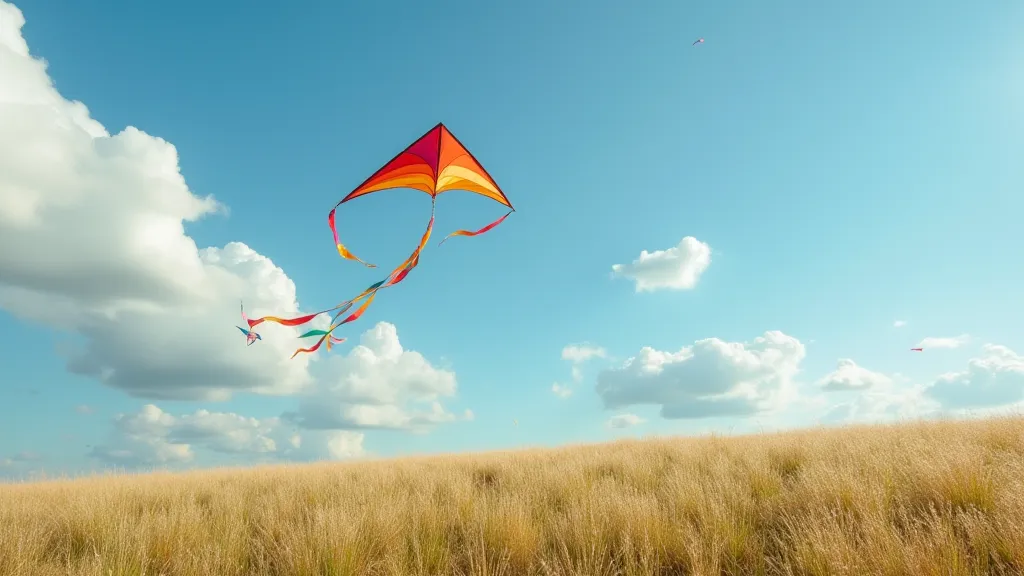Kite Flying Tips: Optimizing Performance and Enjoyment
So you’ve built your custom kite – fantastic! Now it’s time to take it to the sky. Kite flying is more than just letting go and watching it soar; it's a skill honed through understanding wind, location, and your kite’s own unique characteristics. This guide will provide you with kite flying tips to optimize your kite's performance and ensure a safe and enjoyable experience. Whether you're flying a simple diamond kite or a complex multi-cell design, these principles apply.
Choosing the Right Location
The location is crucial for successful kite flying. Consider these factors:
- Open Space: You'll need a large, unobstructed area. Fields, parks, beaches, and large lawns are ideal. Avoid areas with trees, power lines, buildings, and roads.
- Wind Direction: Observe the wind. You want a consistent breeze, not gusty or swirling winds. A slight upwind bias is generally good, allowing you to control the kite's movement.
- Surface Conditions: The surface affects how much the kite will be tugged when it lands. Soft grass is much kinder than hard-packed sand or concrete.

Understanding Wind Conditions
Different kites are designed for different wind speeds.
- Light Winds (5-10 mph): Smaller kites and those with larger surface areas, like delta kites or box kites, perform best.
- Moderate Winds (10-20 mph): Most kites will fly well in this range, but you might need to adjust the bridle (more on that below).
- Strong Winds (20+ mph): Sturdy kites with smaller surface areas are preferred. Be cautious; strong winds can easily break lines or damage the kite.
Feeling the Wind: If you're unsure, hold up your hand. A gentle breeze will feel like a slight pressure. A stronger wind will noticeably push against your hand.
Bridle Tuning: The Key to Performance
The bridle is the system of lines that connects the kite to the flying line. Adjusting the bridle allows you to fine-tune your kite’s angle of attack and overall performance.
- Too Little Tension: If the kite seems sluggish, dives quickly, or struggles to stay aloft, move the bridle point slightly forward. This increases the angle of attack.
- Too Much Tension: If the kite pulls aggressively, loops excessively, or is difficult to control, move the bridle point slightly backward. This decreases the angle of attack.
- Small Adjustments: Make small changes (1/4 inch or less) and observe the effect before making further adjustments.
Troubleshooting Common Flight Issues
Even with careful tuning, you might encounter issues. Here's how to address them:
- Kite Spins: Usually a bridle issue. Try moving the bridle point slightly to one side or the other. Also check for uneven wing shapes or damage.
- Kite Dives: Bridle is likely too far forward. Move it back slightly.
- Kite Won't Stay Aloft: Insufficient wind, bridle too far back, or kite is too heavy for the wind conditions.
- Line Breaks: Using the appropriate line strength for the kite's size and wind conditions is vital.

Safety First!
Enjoying the hobby responsibly is paramount.
- Be Aware of Surroundings: Watch out for people, cars, and other obstacles.
- Use Appropriate Line: Use a strong, durable line suited for the kite's size and expected wind conditions.
- Avoid Power Lines: Stay well away from power lines – they are extremely dangerous.
- Weather Conditions: Avoid flying in thunderstorms or during periods of severe weather.
- Supervision: Children should be supervised when flying kites.

With a little practice and these simple kite flying tips, you’ll be soaring to new heights in no time. Happy flying!





